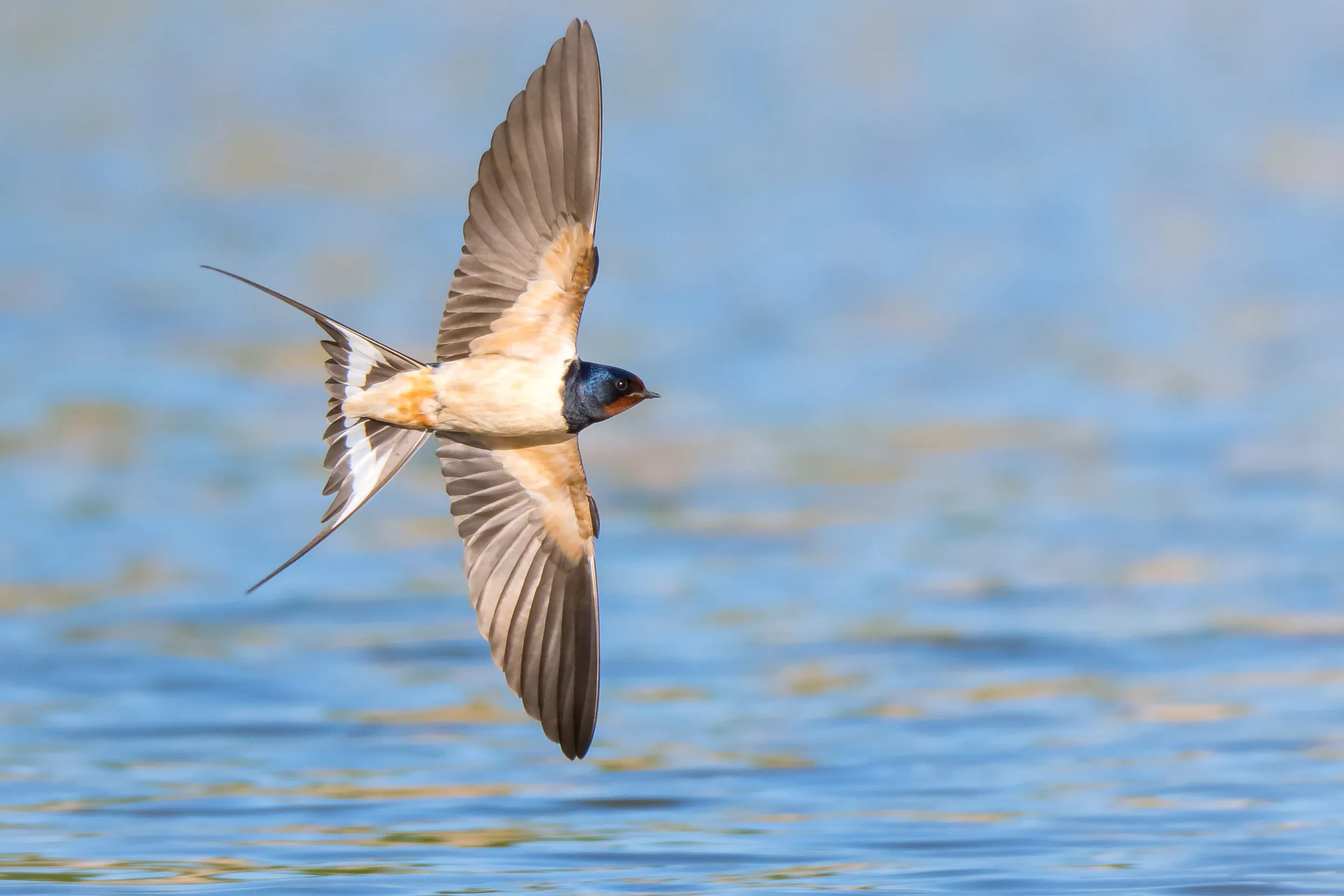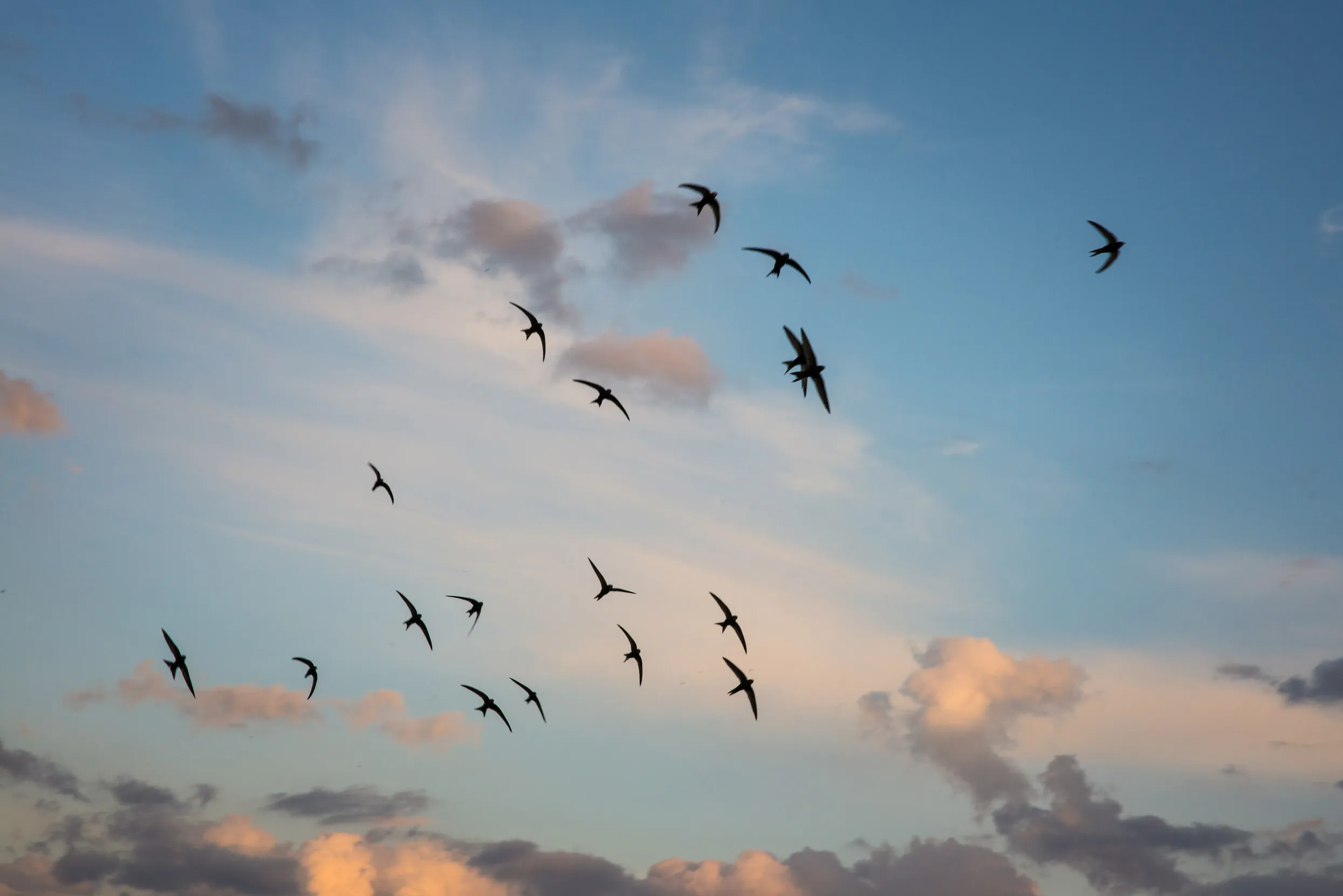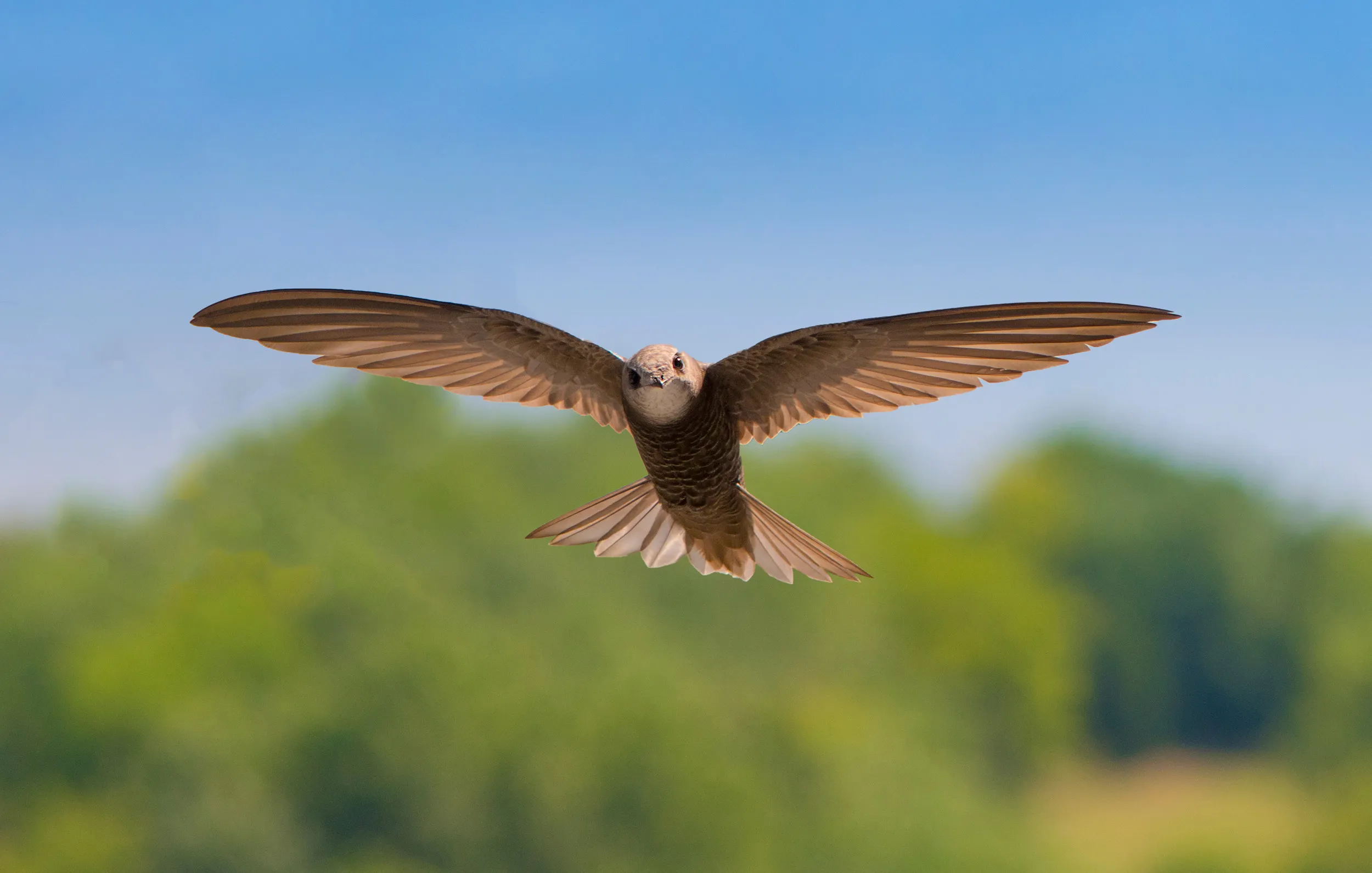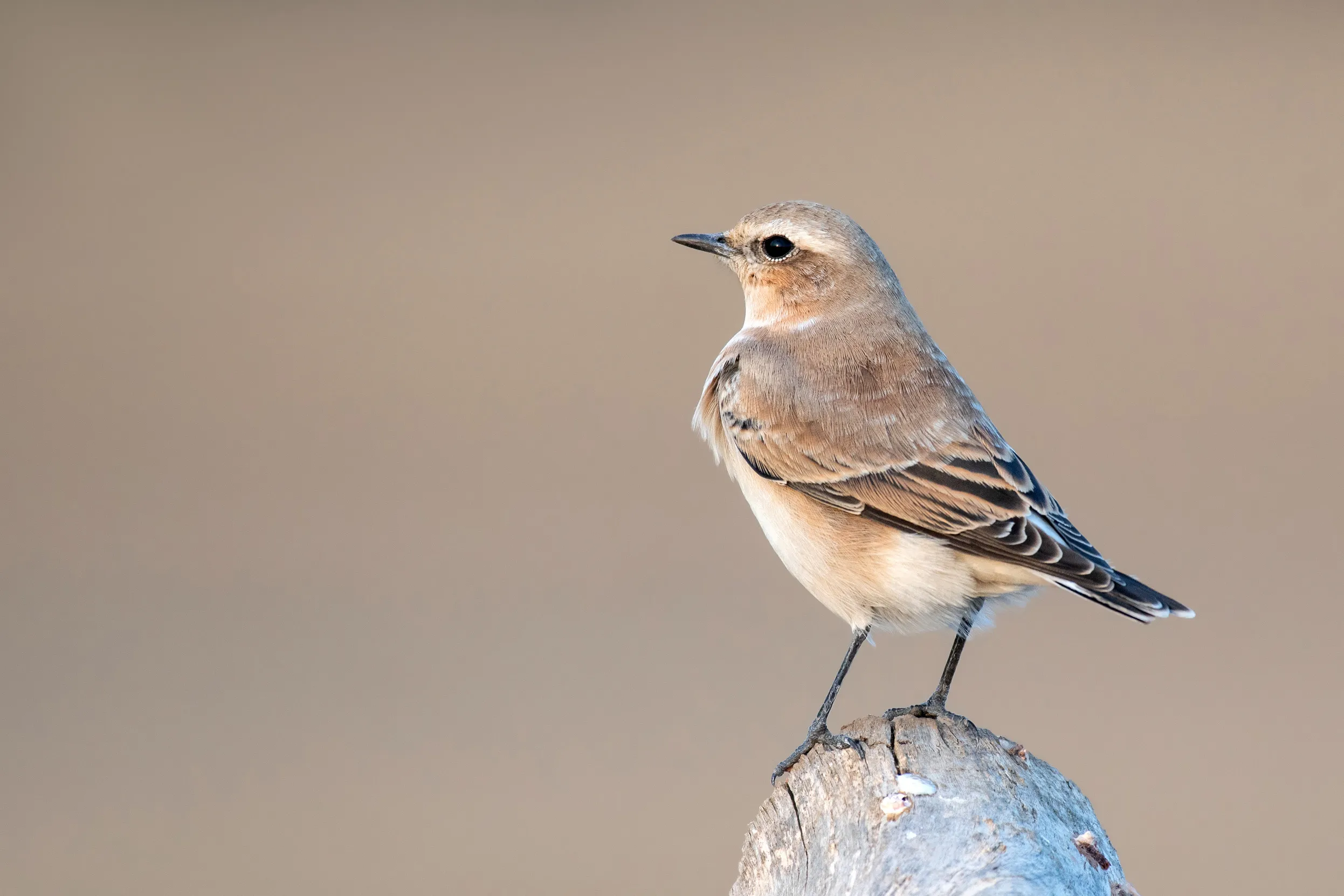News
Eight ways birds beat bitter weather
We look at eight strategies birds employ to get them through the colder months.
Spring is a real highlight of the birdwatching calendar with migration well and truly underway. But as well as our summer migrants, such as Swallows and Swifts, who arrive to nest and raise their chicks, there’s some truly interesting short-stay visitors that are well worth looking out for.

By now, with spring well and truly under way, most of us will have seen a few Swallows and Swifts and heard the sweet cascading songs of warblers. Our isles are once again buzzing with the activities of courting and nesting birds, many of which will have hot-winged it from southern Europe, Africa, or even further afield.
But not all the birds that we see or hear in spring will be staying with us; some will be merely passing through as they continue their epic northbound journeys.
For thousands of migratory birds, our gardens, parks, estuaries and coastal headlands are a convenient place to rest up and feed before travelling on to their breeding grounds across the UK. Others, however, are simply stopping off here to refuel as they make their way to spend the relatively short summer in Scandinavia, Iceland, or even Greenland.
These transient visitors are known as ‘passage migrants’ and while many avian travellers pass overhead unseen and often unheard, many do make landfall on our shores. Often likened to motorway service stations, our vast network of mudflats, wetlands, marshes, parklands and meadows all provide a safe place to temporarily rest, along with supplying a banquet of high-energy food for many weary winged voyagers.
It’s not always easy knowing just which birds are passing through and which ones are staying with us, especially as individuals of the same species can be involved.
That flock of Dunlin or Golden Plover that you may see feeding on a muddy shoreline could easily comprise birds that are heading inland to nest in the English Pennines or Scottish uplands as well as those that are carrying on to the Norwegian tundra, having wintered in West Africa.
A Wheatear spotted on your local playing field in March or early April is likely to be heading to a breeding location somewhere in the UK, while one you may see along our coast in late April and May is more likely to be bound for Greenland.

Weather can play a huge part in influencing the numbers of passage migrants that we see each spring and autumn. Strong southerly winds in April and May can result in significant movements of northbound birds turning up on our shores while north-easterly winds in September can steer birds through the UK as they head back south.
A little light rain in the morning can also cause migrating birds to drop down from the skies, to take advantage of a short feed-up before continuing on their way. Birdwatchers often refer to this as a ‘fall’ when large numbers of birds, often involving several different species, suddenly appear as if out of nowhere!
So, when you next see a Redstart, flycatching from a barbed-wire fence or a House Martin whizzing overhead, consider not only the journey it has had to get here but also the one it may yet have ahead of it – it may not have just ‘arrived’ but simply be passing through…
These smart waders can turn up just about anywhere where there’s water, from gravel pits to small ponds in fields, wet ditches and marshlands. They are quite common passage migrants in spring and especially late summer and autumn, as they move between wintering grounds in southern Europe and Africa and breeding areas in northern European and Russian forests.

With only around 300 pairs nesting here, the large numbers that pass though the UK in spring are mostly bound for Iceland and Scandinavia. Often gathering in large flocks to roost at reservoirs, these curlew-like waders can turn up in small numbers just about anywhere.
Listen out for an excitable peeping call, with around six to eight notes in rapid succession, which is then repeated. Sometimes known as ‘seven whistlers’ because of the number of notes in their call, whimbrels can be heard at night on migration as well as during the day.

Although they rarely stay to breed in the UK, many hundreds of Black Terns can pass through here during spring as they migrate north. These dapper freshwater-loving terns can suddenly appear at inland reservoirs and wetland nature reserves after a late spring rainstorm.

Although tens of thousands of these sadly declining aerial masters do stay to breed in the UK, many more pass through as they stream northward into Scandinavia. Some migration hotspots see massive movements of Swifts well into early summer.

Although one of our earliest migrants to arrive in spring, Wheatears continue to pass through the UK well into May. These later birds are heading to breeding grounds further north and time their arrival to coincide with the later onset of the Arctic spring.

It’s worth keeping an eye out for passage migrants wherever you are, but here’s some top RSPB nature reserves often favoured by these birds on the move.
A renowned migration hotspot, birds often make first landfall here having crossed the channel.
This accessible nature reserve provides a welcome refuge for weary feathered travellers.
The RSPB’s most southerly reserve attracts a range of birds on the move in the spring and autumn.
A wide range of migratory species home in on the enticing variety of habitats at this famous south-east coast reserve.
Northbound birds pass through this impressive site in often spectacular numbers, while others stay on through the summer.
Although known primarily for its nesting seabirds, this extraordinary east coast reserve is also a migrant magnet for thousands of birds.
Another rugged coastal reserve that provides essential shelter and food for birds on the move.
Belfast Lough, County Antrim/Down
The food-rich mudflats provide an energy-packed banquet for flocks of wading birds on route to breeding grounds to the north.
Enjoy the thrilling sight of migrating skuas passing offshore, while northbound waders and wildfowl stop off in impressive numbers to refuel on the beaches and unique machair grasslands.
Loch of Strathbeg, Aberdeenshire
This site of international importance is one of the best-known localities for migrant birds in Scotland. The loch itself along with the adjacent fields and pools provide important roosting and feeding sites for huge numbers of birds.
The famous dramatic seabird-filled cliffs provide a stunning backdrop for anyone seeking migratory birds, which in the right conditions can pass through from all points of the compass.